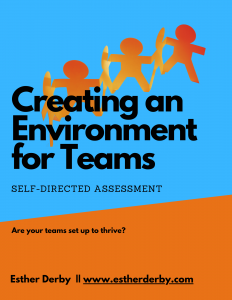At the start of my series on Performance without Appraisal, I listed the goals that organizations hope to achieve with annual performance appraisals and so-called performance management systems:
improve individual performance
improve organizational results
determine pay/promotion
These are legitimate concerns.
The data shows, and my experience tells me, that annual appraisals fail miserably with the first two goals. The ratings and rankings that come out of reviews may provide justification (or cover) for so-called merit pay and bonuses–but merit pay has its own problems.
In the next series of posts, I’ll discuss ways to meet those goals.
In order to improve performance, we need to look at both the person and the environment. P = f (p,e).
People need information in order to improve their performance. Receiving that information at the end of the year (or even at mid-year) isn’t timely. Worse, ratings and rankings are evaluations, not the sort of concrete examples of results/behavior and their impact that people need to improve.
If you really want people to have information when it will do the most good, build feedback and opportunities for improvement into the system.
Agile (when it is done properly) does this quite well. Some examples:
Programmer tests
Continuous integration and build with automated tests
Testers on the team
All of these agile practices provide information that allows individuals to find errors early.
The following agile practices provide information that allows not only individual level improvement, but team-level improvement as well.
Pair programming (especially with frequent pair changes)
Daily stand-up (whether done sitting or standing)
Task boards
Information radiators
Retrospectives
Product demos
On site or near customer
Feedback from the system may allow people to work more effectively within their current process (single-loop learning). But if you add reflective processes (e.g., effective retrospectives) teams can examine the process and the assumptions behind the way they work. That’s an opportunity for double-loop learning.
If you really want individuals and your organization to do better, you need both. And you need them more than once a year.
Next: Make interpersonal feedback about work and working relationships business as usual, not an annual or semi-annual event.


